Nvidia recently launched its dual-GPU GTX 590 that should lock horns with AMD’s HD 6990. Despite initial high expectations, Nvidia decided to lower the clocks shortly before launch, making the GTX 590 a worthy competitor rather than a clear cut winner. However, Point of View / TGT had their own ideas and their GTX 590 Ultra Charged cards run at 692MHz for the GPU. Just a reminder – reference GPU clock is 607MHz.
TGT-590-A1-UC cards go for around € 680, which is pretty steep but bear in mind that it’s a factory overclocked card. Although GTX 590 will allow for overclocking via various tools, an overclocked GTX 590 (without any overvoltaging) that would run stable at 690MHz is not quite an easy find.
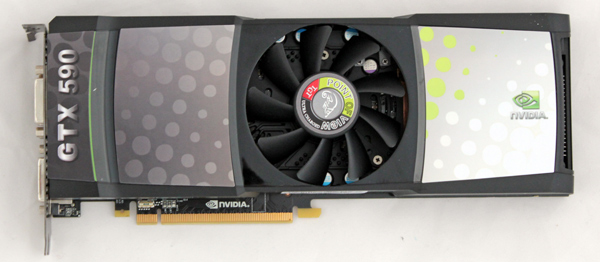
Nvidia did a pretty good job with reference cooling. The cooler isn’t very loud despite having to cool two GPUs. GTX 590 Ultra Charged proves that the cooler with a central fan and vapor chamber technology is enough for overclocking the GPU to 692MHz.
We know that GTX 590 uses two GF110 processors while GTX 580 cards are proof that GF110 is a pretty good overclocker. Reference GTX 580 runs at 772MHz whereas GTX 580 Beast runs at 873MHz. Still, GTX 590’s reference GPU clock is only 607Mhz. Overvoltaging the GPU is a must if you’re planning on extreme overclocking, but you probably heard that a few cards blew up after careless overvoltaging so caution is advised. Nvidia advises air-cooled GTX 590 owners to stick to default voltages. Most GTX 590 cards’ GPU has 0.912mV whereas our Ultra Charged runs at 0.962mV.
Point of View/TGT will strap its GTX 590 Beast with water blocks in two or three weeks time, so keen overclockers should perhaps wait a bit more.
Apart from GTX 590 Ultra Charged and the announced GTX 590 Beast, the company already offers POV/TGT GTX 590 Charged (668 MHz core clock, 1336 MHz shader clock, 3628 MHz memory clock) for about €630. GTX 590’s reference clocks are 607MHz for the GPU, 1214MHz for shaders and 3414MHz for the memory.
Below you see GPUZ shot of GTX 590 at reference and Ultra Charged clocks.
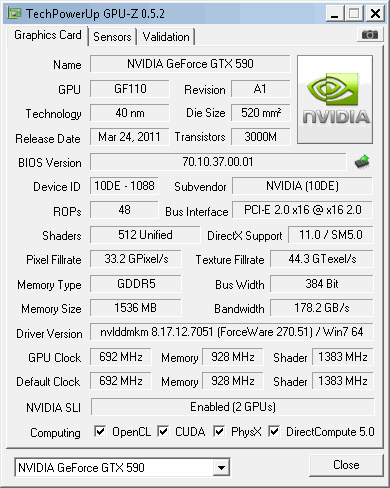
Nvidia used a single-PCB design with a central fan. As we already said, all Nvidia partners currently use reference cooling on GTX 590 cards and POV/TGT is no exception.
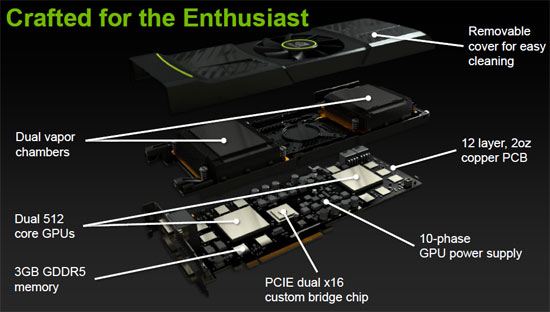
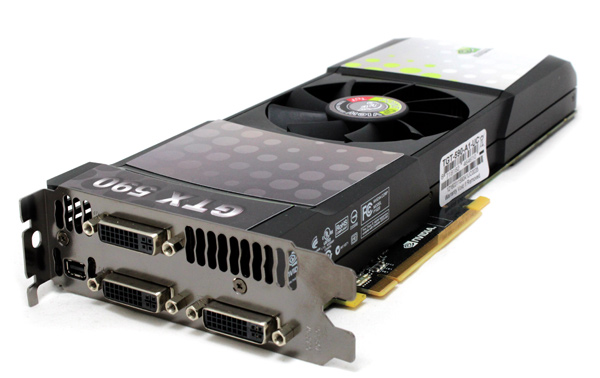
PCB is the reference one with four video outs. The center of the cooler is slightly lower than the far ends of the cooler, improving airflow in both directions.
POV/TGT GTX 590's cooler is not too loud during gaming. Nvidia obviously made sure that this is their quietest dual GPU card so far.
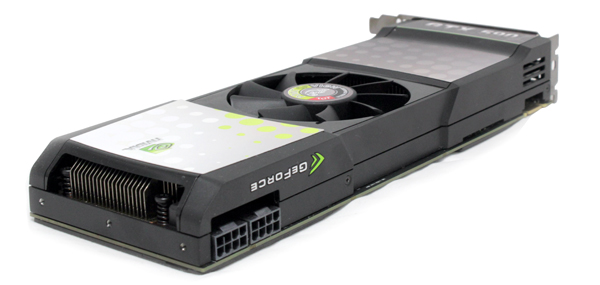
GTX 590’s thermal efficiency comes from using two vapor-chambers and their heatsinks. The outlets on the front and back of the card are there to push hot air out, helping the fan to run without making much noise. Bad thing about such a design is that temperatures inside the case can go up significantly, which means that you should make sure of optimum air flow inside your case.
The back of the GTX 590 has two passive heatspreaders that serve as backplate for vapor chambers as well. Below the black plates you’ll find GDDR5 memory modules, so the memory has passive cooling. The memory in question comes from Samsung - K4G10325FE-HC04 specified to run at 1250MHz (5000MHz effectively).
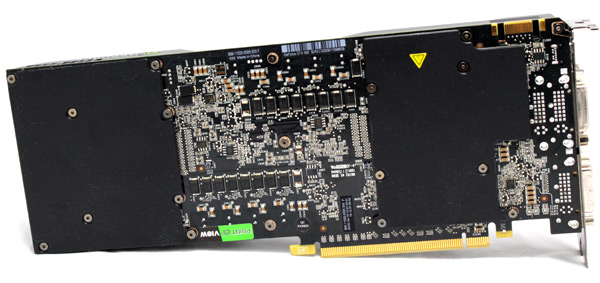
GTX 590 is almost 11 inches long whereas the HD 6990 is about 12.2 inch. You can check out the comparison between these two cards below.
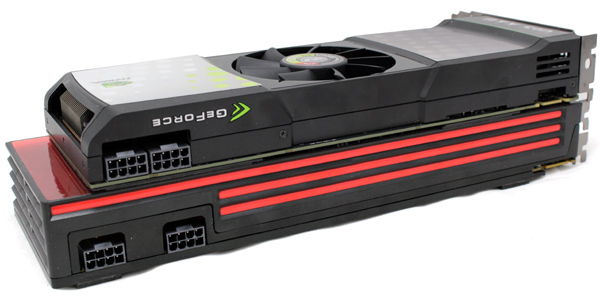
Powering the fastest high-end cards today requires two 8-pin power connectors. GTX 590 has a 365W TDP and Nvidia recommends an 800W PSU. GeForce logo above the power connector glows when the card is running. In case the card has power trouble, it will blink.
Geforce GTX 590 has one SLI connector, which is enough for Quad SLI. Of course, Quad SLI will require at least a 1100W PSU as well as a motherboard that will allow at least one extra slot between the two cards.
POV/TGT’s GTX 590 allows you to indulge in some Nvidia Surround. The card comes with four video outs and, since it is a dual GPU card, you can simultaneously use up to four displays. Fermi cards usually allow for only two displays due to Nvidia’s single-GPU design limitations. As you can see from the picture, GTX 590 comes with three dual-link DVIs and one mini-DisplayPort.
The PCB holds two GF110 as well as one Nvidia NF200 PCI-Express bridge chip, which enables for internal communication via x16 PCI-E lane connection. The NF200 is manufactured on an 80nm process and consumes about 12W. The GPU uses 10 phase regulation whereas the memory uses 4-phase. Nvidia opted on CHiL CHL8266 voltage regulator, one per each GPU (the same regulator is used on GTX 580 / GTX 570 cards).
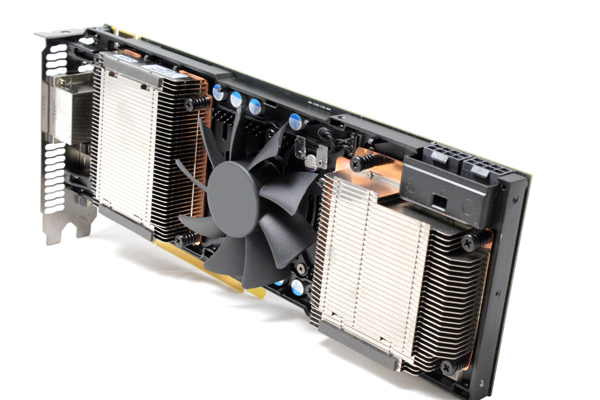
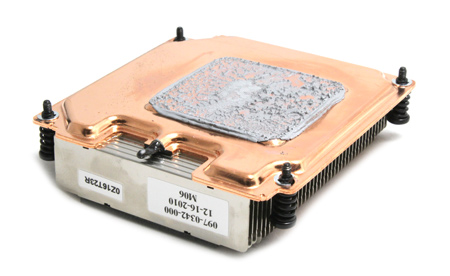
Vapor chamber technology needs no classic heatpipes for transferring heat from the cooler base to the heatsink. The vapor chamber, which is the cooler’s base at the same time, is in charge of trasfering GPU heat to the heatsink. That way, air can flow through the heatsink unobstructed, which is not the case when using heatpipes that obstruct airflow.
The Packaging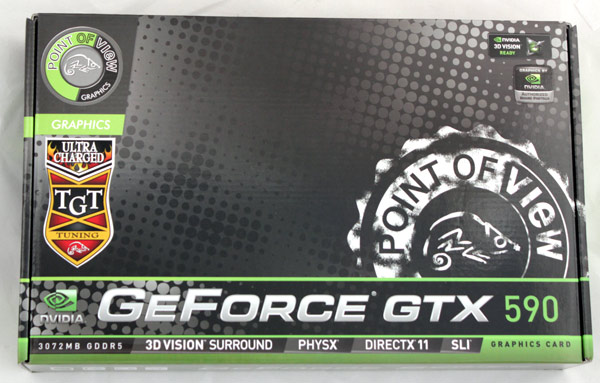
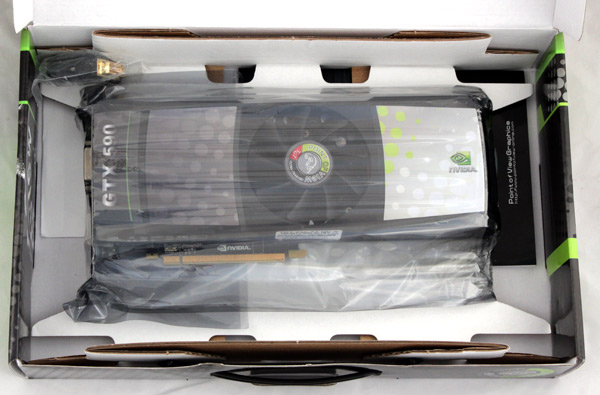
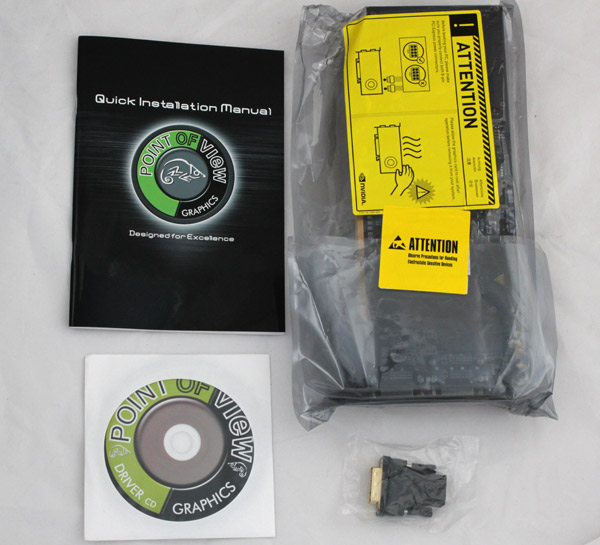
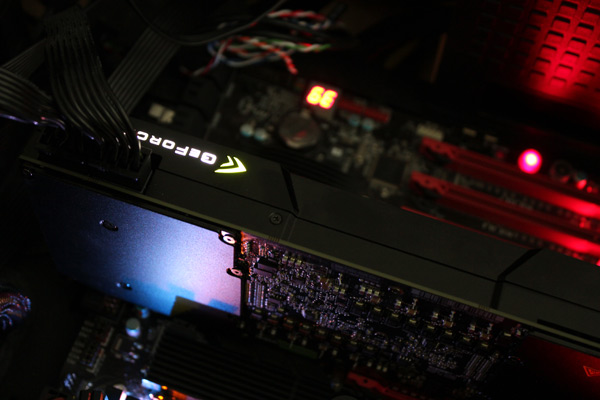
Motherboard: EVGA 4xSLI
CPU: Core i7 965 XE (Intel EIST and Vdrop enabled)
Memory: 6GB Corsair Dominator 12800 7-7-7-24
Harddisk: OCZ Vertex 2 100 GB
Power Supply: CoolerMaster Silent Pro Gold 800W
Case: CoolerMaster HAF X
Fan Controler: Kaze Master Pro 5.25"
Operating System: Win7 64-bit
Nvidia 270.51_desktop_win7_winvista_64bit
AMD 11.4 Preview CCC
3DMark 2011
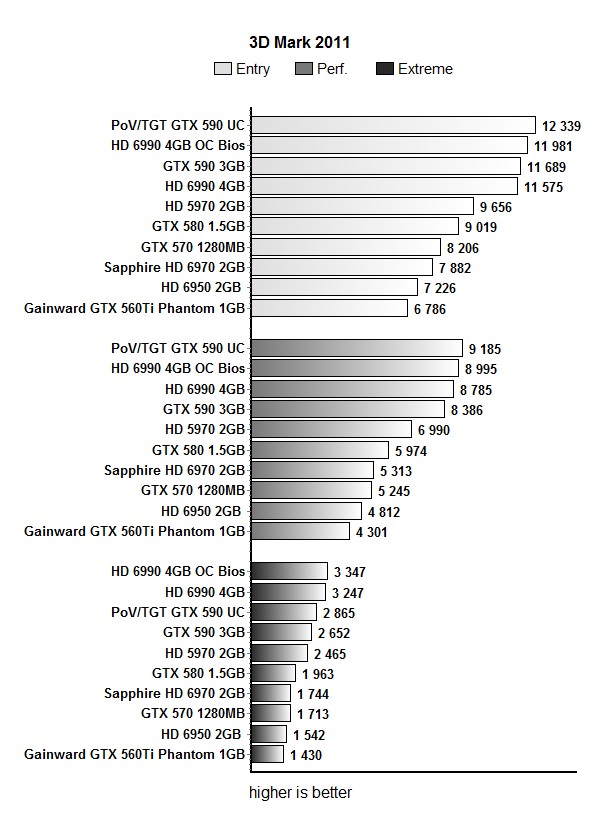
Aliens vs Predator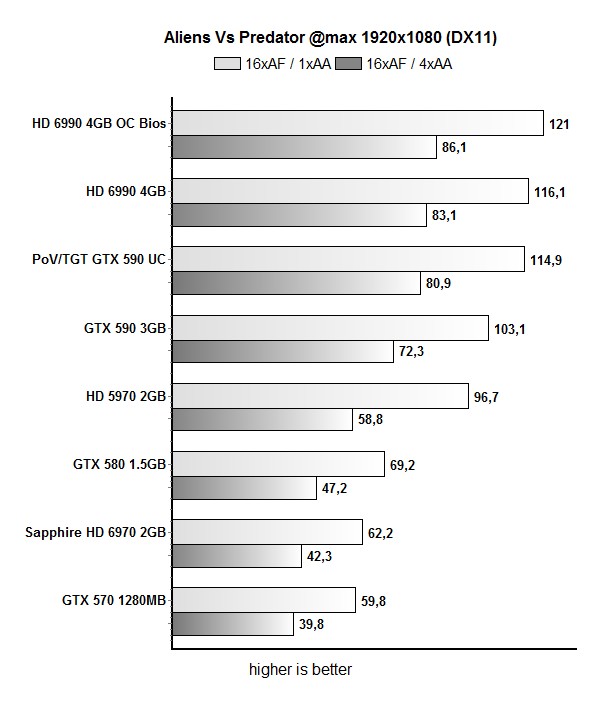
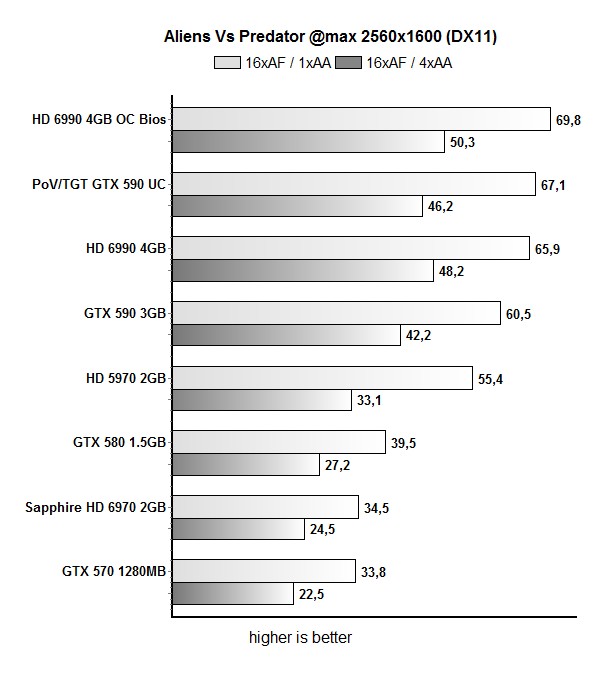
Metro 2033
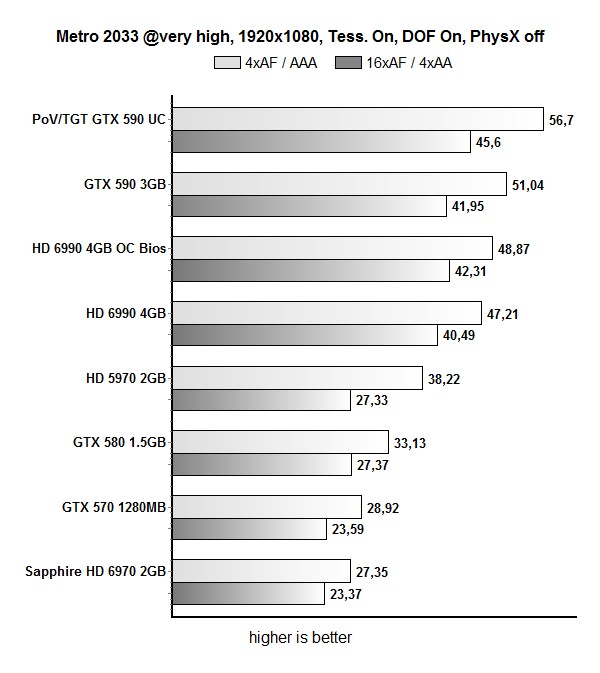
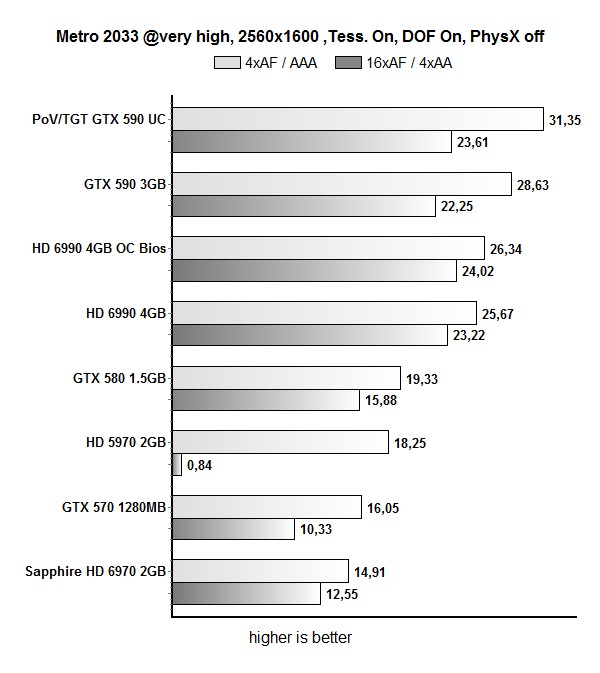
Unigine Heaven
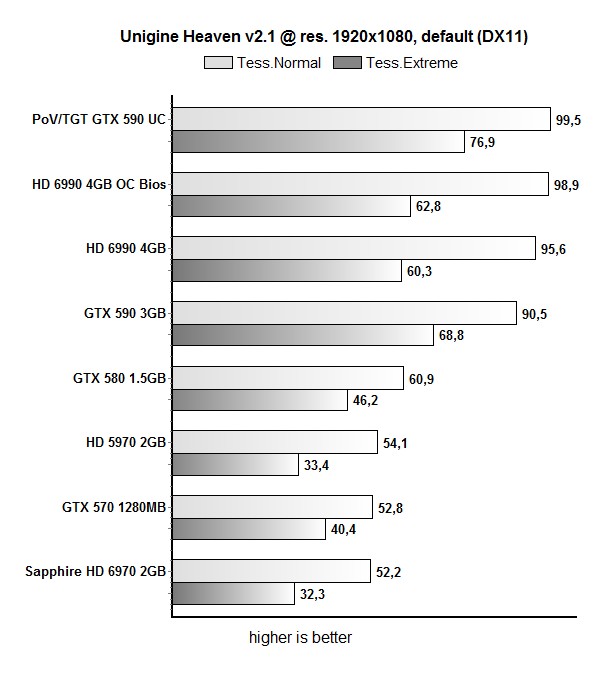
TessMark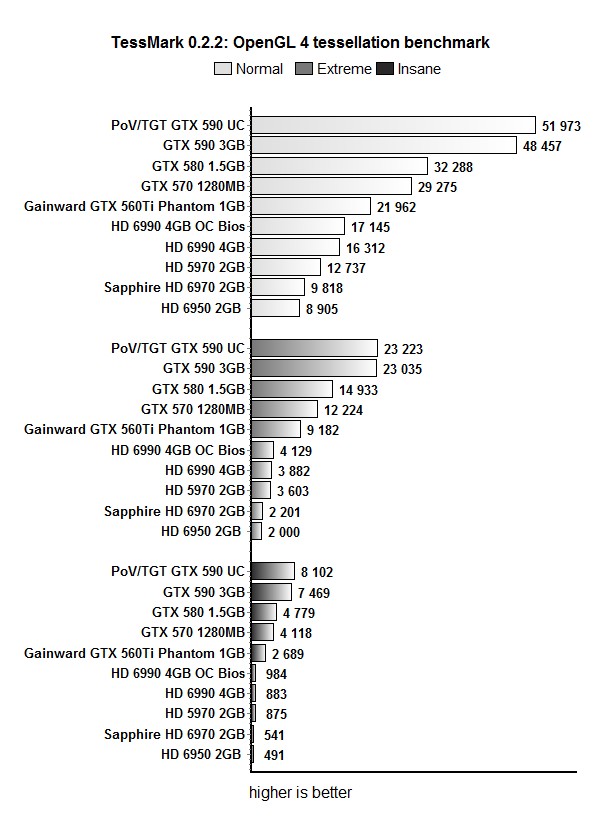
Overclocking
Point of View / TGT je pushed its GTX 590 Ultra Charged from reference 607MHz to 692MHz for the GPU.

The factors that may make overclocking more difficult are thermals and GTX 590’s voltage. Note that Nvidia suggests water cooling for more extreme clocks. Air cooling is of course a cheaper solution and thus most partners use that, although several non-reference coolers have been announced.
Since we’re talking about an air cooled card, we were quite pleased with TGT’s overclock. Looking at other GTX 590 overclock results, it’s pretty clear that not all GTX 590s will run at 690MHz or higher, although some may be pushed beyond 750MHz. Thus, if you’re lucky, you may get a card with a chip that will support all your overclocking desires. GTX 590 has limited overclocking potential, at least until overvoltaging and better cooling come into play. Our test GTX 590 UC ran at 962mV while most other GTX 590s feature lower voltages.
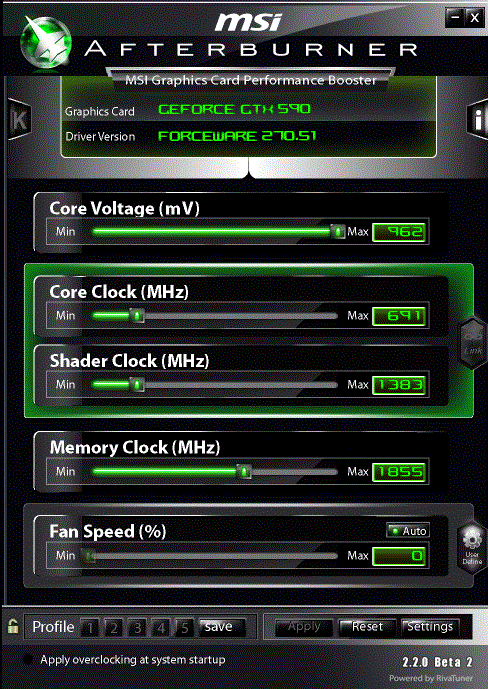
The picture below shows Gainward's reference GTX 590 card's voltage.
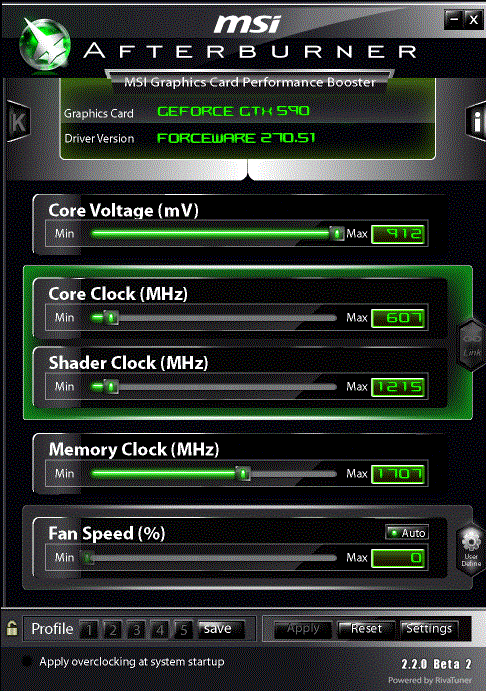
All PoV/TGT GTX 590 UC cards have been meticulously tested before being branded UC, and they’re guaranteed to run at 692MHz for the GPU. We attempted to overclock it further, and it was a breeze. We pushed the GPU to 740MHz but we couldn’t complete all the tests beyond 725MHz.
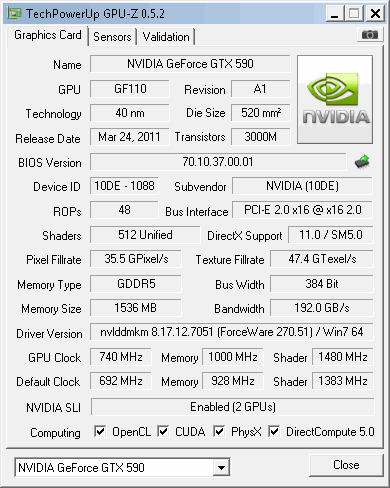
TGT’s factory overclock will provide maximum 12-14% better results compared to reference GTX 590. Further overclocking brought about a 2% performance increase in gaming tests.
TGT GTX 590 Beast will soon hit the shelves and we hope that this water cooled card will be ready for extreme overclocking.
Thermals and Noise
Reference GTX 590’s GPU hits 88°C during gaming. Despite the overclock, GTX 590 UC’s thermals ended up pretty much identical to the reference card. GTX 590 UC’s fan can be heard but it’s not too loud.
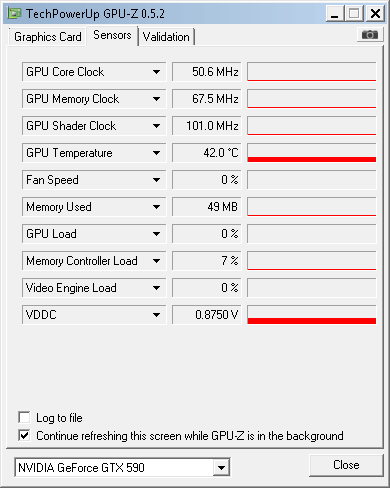
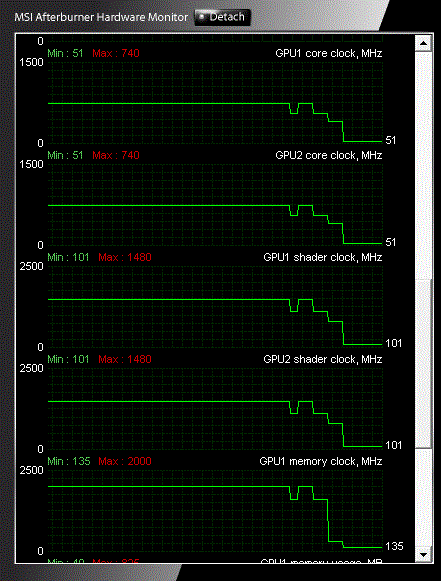
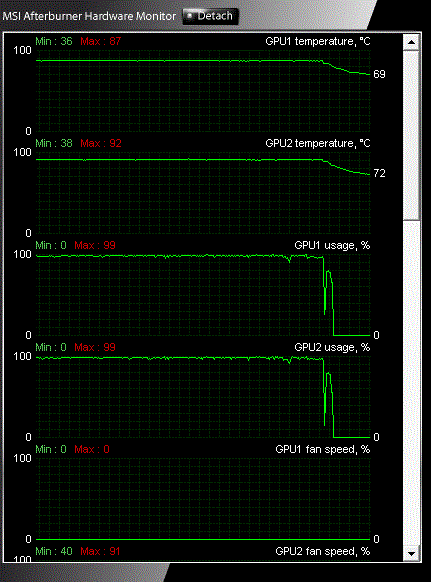
Our test rig drew about 60W more with GTX 590 UC than with the reference GTX 590.
As far as we are aware, GTX 590 Ultra Charged is the fastest GTX 590 you can find on the shelves. Point of View / TGT will soon launch GTX 590 Beast, a card with even higher clocks and water cooling. GTX 590 Ultra Charged comes with air cooling, which does its job well as the factory overclocked card wasn’t too loud during gaming.
While reference GTX 590 cards run at 607MHz for the GPU and 3414MHz for the memory, Ultra Charged’s clocks are 692MHz GPU and 3712MHz memory. This boost will provide for about 12% higher gaming results. Needless to say, but we will anyways, is that dual GPU 590 cards will allow for using up to 4 displays simultaneously, unlike Nvidia’s single-GPU cards that only allow for two.
GTX 590’s air cooling is of course not quite ideal for overclockers, because squeezing out the max from GTX 590 will require water cooling. Of course, PoV/TGT are aware of this and they will soon launch a GTX 590 Beast with a water block. Since we’re talking about hand-picked chips here, our GTX 590 Ultra Charged was quite responsive to overclocking and we managed to push its GPU up to 740MHz.
Those who are looking for the fastest factory overclocked GTX 590 will definitely love GTX 590 Ultra Charged. However, those on the prowl for a GTX 590 that will handle extreme overclocking should wait a bit more until the water cooled GTX 590 Beast hits the market. Point of View/ TGT GTX 590 Beast cards with Aqua Computer’s water blocks should be available in one or two weeks from now. If you chose to go for GTX 590 Ultra Charged, GTX 590 Charged or Point of View’s reference GTX 590, you can find them here.

